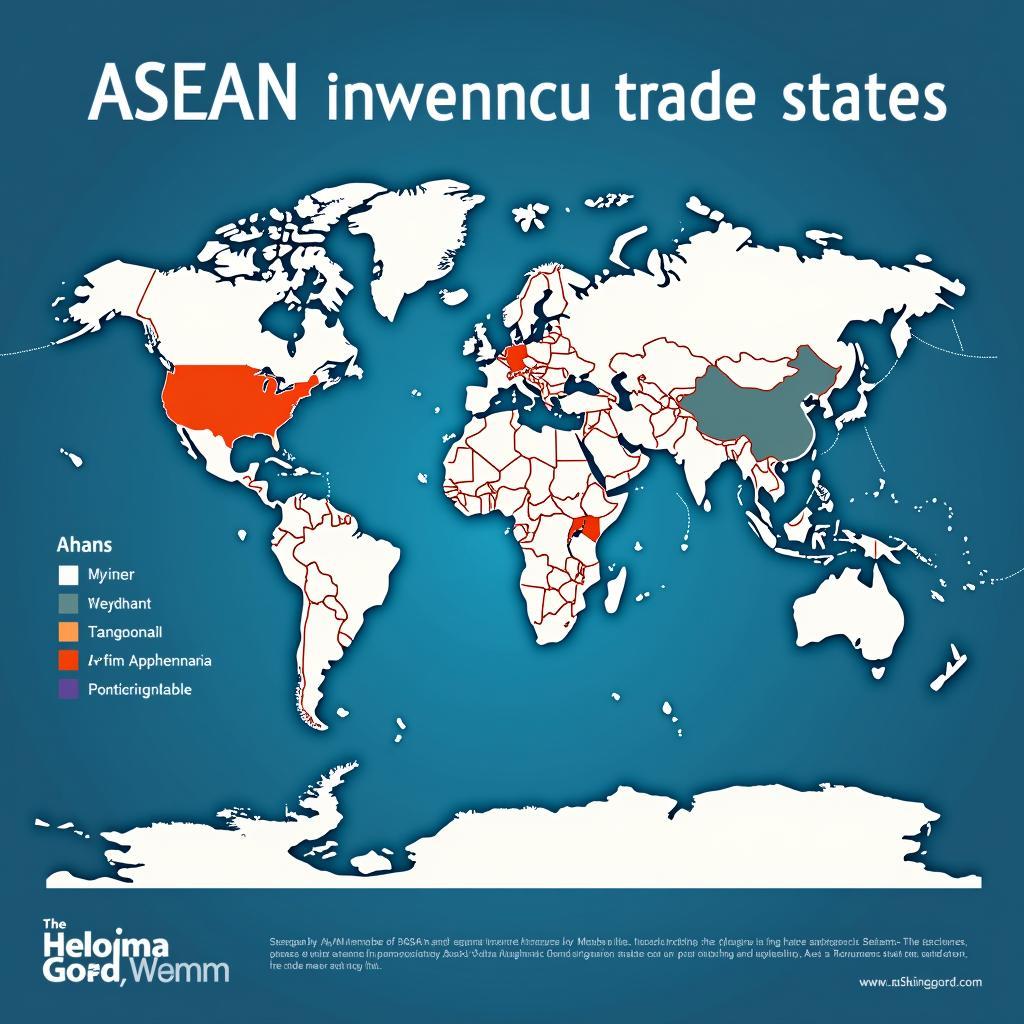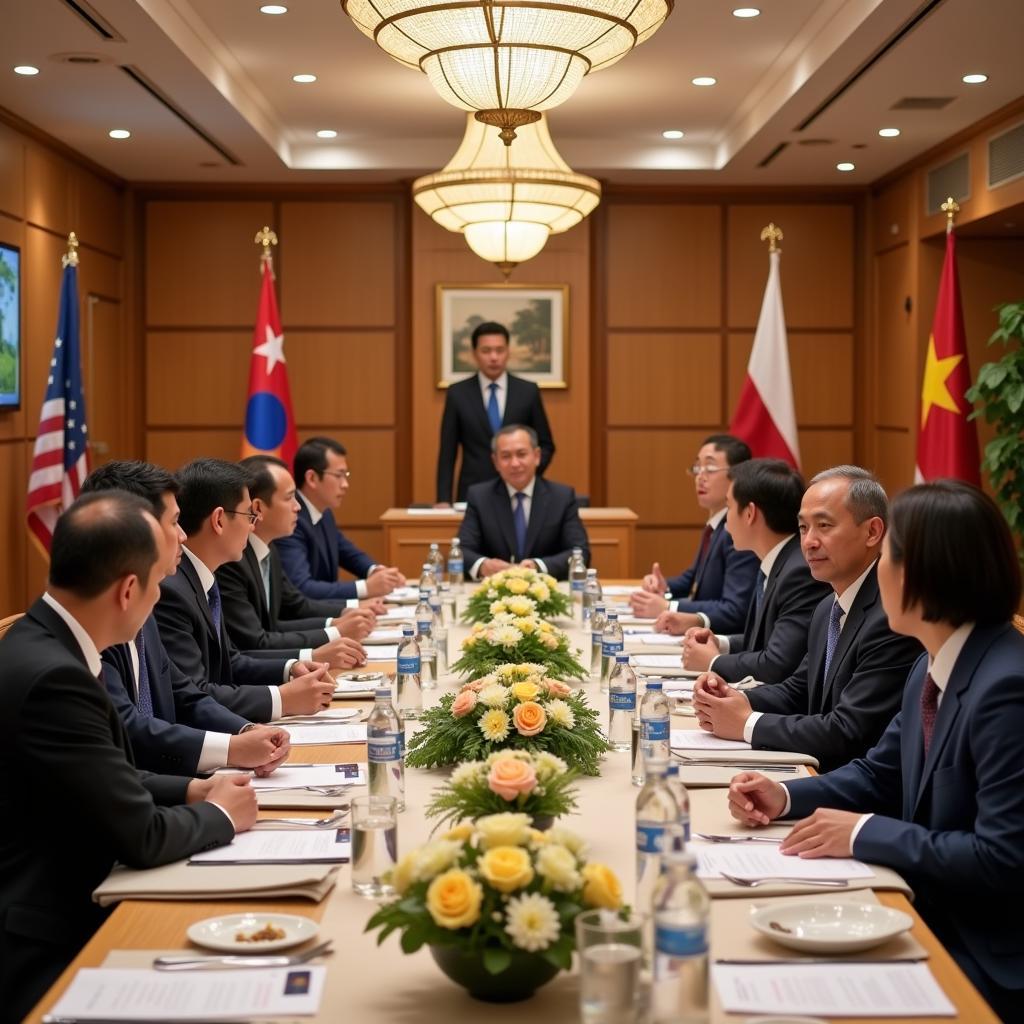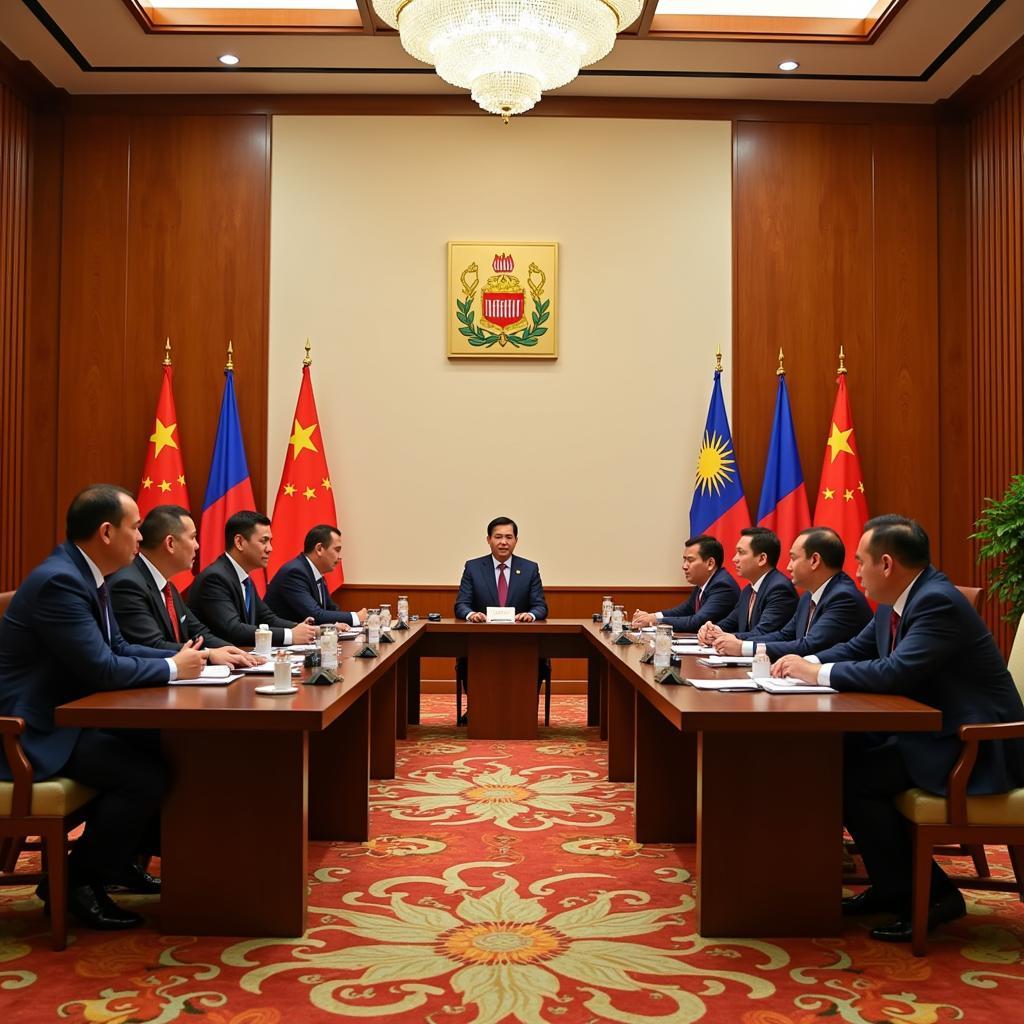The Association of Southeast Asian Nations (ASEAN) stands as a testament to regional cooperation and integration. Established in 1967, this intergovernmental organization has consistently strived to foster economic growth, social progress, and cultural development amongst its ten member states. This collaborative spirit has yielded numerous benefits for the region, collectively known as “Ase Benefits.” These advantages span various sectors, from economic opportunities and enhanced trade to improved political stability and stronger regional security.
Economic Powerhouse: How ASE Benefits Drive Growth
One of the most significant ASE benefits is the region’s emergence as a global economic powerhouse. By promoting trade liberalization and facilitating the free flow of goods, services, and investments, ASEAN has created a dynamic and interconnected market.
The ASEAN Economic Community (AEC), established in 2015, further strengthens this economic integration. The AEC blueprint outlines initiatives to achieve a single market and production base, promoting competitiveness and attracting foreign direct investment. This interconnectedness translates to increased trade opportunities, job creation, and overall economic prosperity for ASEAN member states.
Beyond Borders: Trade and Investment Advantages
ASE benefits extend beyond the region’s borders. ASEAN has forged strategic partnerships with major economies worldwide, including China, Japan, the United States, and the European Union. These agreements grant ASEAN preferential access to global markets, further boosting trade and investment.
 ASEAN Trade Partnerships
ASEAN Trade Partnerships
For businesses, operating within the ASEAN framework offers access to a consumer market of over 650 million people. This vast market, coupled with a young and increasingly affluent population, presents lucrative opportunities for growth and expansion. Additionally, the harmonization of regulations and standards within ASEAN simplifies business operations, making it easier for companies to navigate the regional landscape.
Stability and Security: Fostering a Peaceful ASEAN
Beyond economic gains, ASE benefits contribute to regional stability and security. By promoting dialogue, cooperation, and peaceful resolutions to disputes, ASEAN has fostered an environment of trust and mutual understanding amongst its member states.
The ASEAN Regional Forum (ARF), established in 1994, serves as a platform for dialogue and consultation on political and security issues. The ARF brings together ASEAN member states and their dialogue partners to address common challenges and promote confidence-building measures. This commitment to peaceful coexistence creates a more stable and secure environment for all.
 ASEAN Security Cooperation
ASEAN Security Cooperation
A Brighter Future: Realizing the Full Potential of ASE Benefits
ASE benefits have undoubtedly transformed Southeast Asia, fostering economic growth, promoting regional integration, and enhancing stability. However, challenges remain in fully realizing the region’s potential. Bridging the development gap between member states, addressing non-traditional security threats, and navigating the complexities of a rapidly evolving geopolitical landscape are among the issues that ASEAN must address.
Despite these challenges, the future of ASEAN remains bright. By continuing to strengthen regional cooperation, embracing innovation, and investing in its people, ASEAN can unlock even greater prosperity and secure a more sustainable and inclusive future for all.
Frequently Asked Questions (FAQ)
1. What are the main objectives of ASEAN?
ASEAN’s primary objectives are to accelerate economic growth, promote social progress, foster cultural development, and ensure regional peace and stability.
2. How does ASEAN benefit its member states economically?
ASEAN promotes economic integration through initiatives like the AEC, facilitating trade liberalization, attracting foreign direct investment, and creating a larger single market for businesses.
3. What role does ASEAN play in maintaining regional security?
ASEAN encourages dialogue and cooperation among member states on political and security issues, promoting peaceful resolutions to disputes and fostering a stable regional environment.
4. What are some of the challenges facing ASEAN?
Key challenges include bridging the development gap between member states, addressing non-traditional security threats, and navigating a complex geopolitical landscape.
5. How can I learn more about ASEAN and its initiatives?
You can find a wealth of information on the official ASEAN website and through reputable sources like the ASEAN Secretariat and ASEAN-focused research institutions.
Need Assistance? Contact ASEAN Media
For inquiries about ASEAN or if you need support, please contact us at:
Phone Number: 0369020373
Email: [email protected]
Address: Thon Ngoc Lien, Hiep Hoa, Bac Giang, Vietnam
Our dedicated customer support team is available 24/7 to assist you. We are committed to providing timely and helpful information to all those interested in ASEAN.

